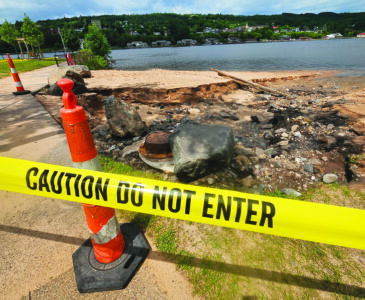Hunting for a response to Chronic Wasting Disease in Michigan

(Michigan Department of Natural Resources) Goals and number of carcasses tested during the 2019-20 deer season as of Jan. 10.
Hunters in Copper Country are still exempt from the ban on baiting and feeding that has taken effect in the Lower Peninsula. However, they’re keeping a close eye on developments and anticipating the continued spread of Chronic Wasting Disease across the state.
Late in 2019, Gov. Gretchen Whitmer vetoed a bill that would overturn the deer baiting and feeding ban put in place by Michigan’s Natural Resources Commission with the intention of slowing the spread of Chronic Wasting Disease.
The NRC is a seven-member body approved by 68% of Michigan voters in 1996 to regulate the taking of game and sport fish. Members are appointed by the governor with 4-year terms.
They enacted the ban with the support of the Michigan Department of Natural Resources, the Association of Fish and Wildlife Agencies, the Michigan United Conservation Clubs and more. Many hunters, championed mostly by Republican legislators, oppose the ban as ineffective and destructive to their sport and the economy surrounding it.
Dave Caspary, a retired lab instructor, has run a small farm in Dollar Bay for 35 years where he trains and breeds horses. He is also president of the Portage Lake Sportsmen’s Club, an active member of the National Rifle Association and a Michigan Hunter Safety Education instructor. He’s dealt with CWD first-hand.
Several years ago, Caspary went on a hunting trip to Wyoming. There, CWD was first found in 1985 and control strategies like feeding bans are still ongoing.
Caspary shot a nice-looking whitetail buck and went through a CWD checkpoint with it. The checkpoint staff took measurements, multiple glandular samples, and commented on how healthy the buck looked. In accordance with state regulation, Caspary had the buck processed while still in Wyoming.
“Their processors knew what had to be done,” he said.
The carcass was cut and cleaned of all the brain and spinal tissue, leaving Caspary with just the meat and the antlers. However, weeks later, both Wyoming officials and the Michigan DNR contacted him.
His buck had tested positive for CWD.
While there are no documented cases of CWD being contracted by humans, it is still recommended to avoid eating the meat of an infected animal. Caspary brought the meat to the DNR station in Baraga to be disposed of, leaving him with little to show for the out-of-state trip.
LITTLE FAITH IN BAN
Baiting and feeding are still allowed in the Upper Peninsula, except for the CWD surveillance area in Dickinson and Menominee counties near Wisconsin where CWD has already been detected.
Caspary is among the hunters of the Keweenaw who are dubious of the ban’s ability to help in the fight against CWD.
“I think they’re just guessing,” he said.
Caspary acknowledges that the DNR has an obligation to react to CWD in some manner, but is not convinced that a baiting and feeding ban will do enough to limit deer contact. He says deer are social animals that naturally congregate to eat together, sniff and lick each other.
“They lick each others’ butts,” he said.
Keith Machiela, vice-president of the Lake Linden-Hubbell Sportsmen’s Club, agrees with Caspary’s assessment of the ban.
“They’re (the state) trying what they can,” he said.
Chad Stewart, deer and elk biologist with the MDNR, agrees that deer are social, and admits avoiding baiting or feeding doesn’t prevent contact between individual deer in a group. He also admits there aren’t studies that prove the effectiveness of a ban, but not because there’s no interest in one.
“There is no ‘null’ situation to compare it (the ban) to,” Stewart said.
What Stewart is sure of is that baiting deer encourages interaction between deer at a higher rate than they normally would, particularly between multiple groups of deer. In a natural setting, deer graze and move on when the food is depleted, but baiting encourages many deer to return to a single place day after day.
Stewart compares it to catching a cold or flu in a human family. If one deer in a doe group catches an illness like CWD, the other deer in that group are going to be exposed to it.
“Those animals live together a lot,” Stewart said.
If someone in a household gets ill, everyone in that household has a high rate of exposure and is likely to catch the illness.
“But you’re not throwing parties,” Stewart said.
According to Stewart, baiting tends to draw multiple groups of deer into an area more frequently than they would typically visit — like a party — increasing the exposure between groups of deer as well as between individuals.
Another reason the concentration matters is because of CWD’s ability to build up in the environment. The prion that causes CWD can exist in the soil indefinitely, waiting to infect another deer. As infected deer return to an area, the prions build concentration around that area. A higher concentration of prions likely means a higher rate of infection, too.
Stewart says the DNR is not sure how much exposure it takes for a deer to get infected, but he believes it takes multiple exposures and isn’t too easily transmitted.
“If it was easily transmitted, I think we would see a lot more CWD cases in our fawns,” he said.
Editor’s note: This is the first of our two-part series on Chronic Wasting Disese. Check back on Friday for the rest of our coverage.




